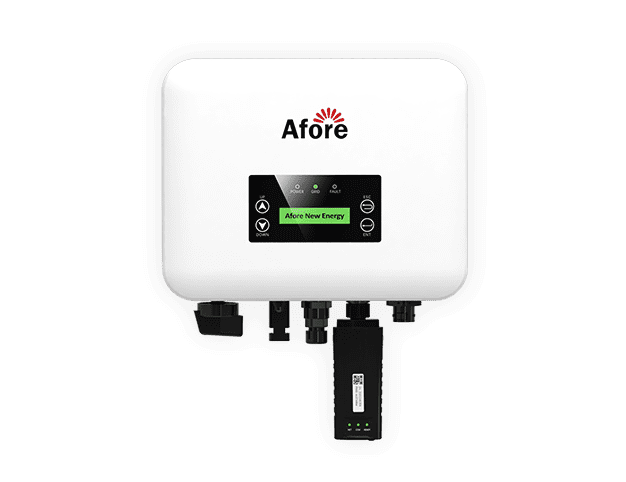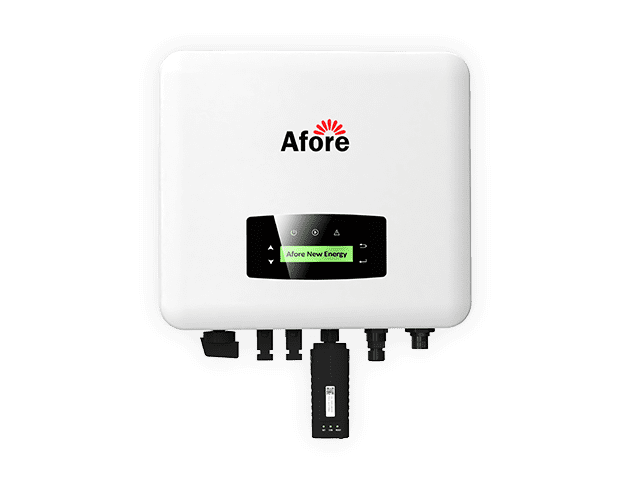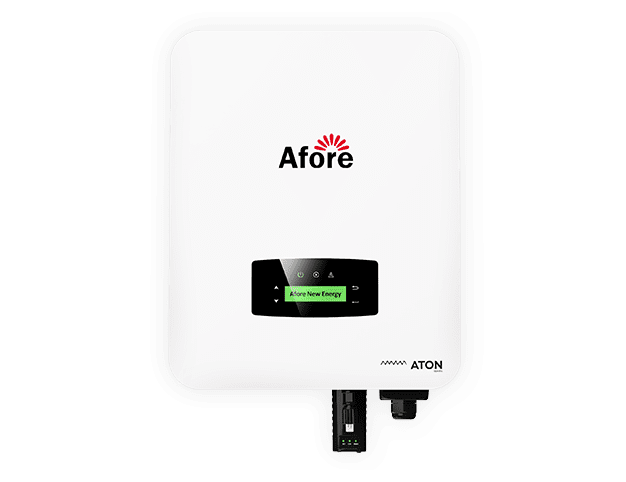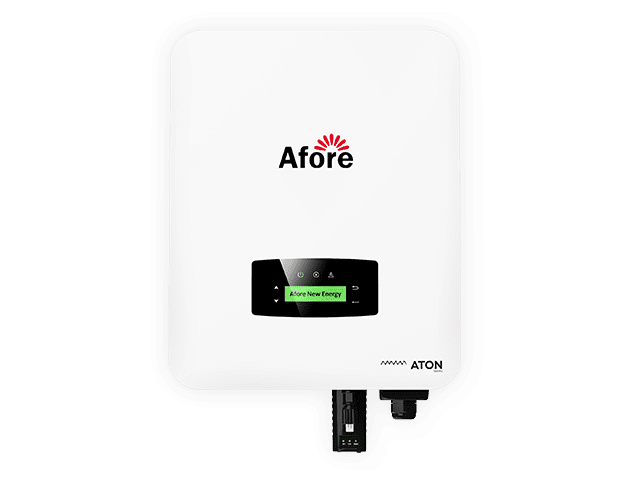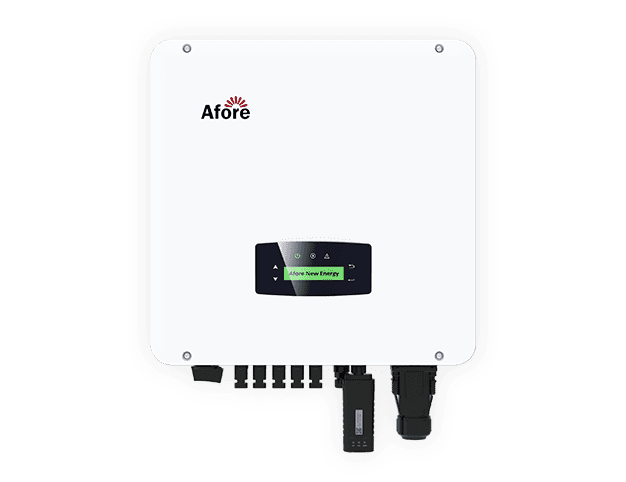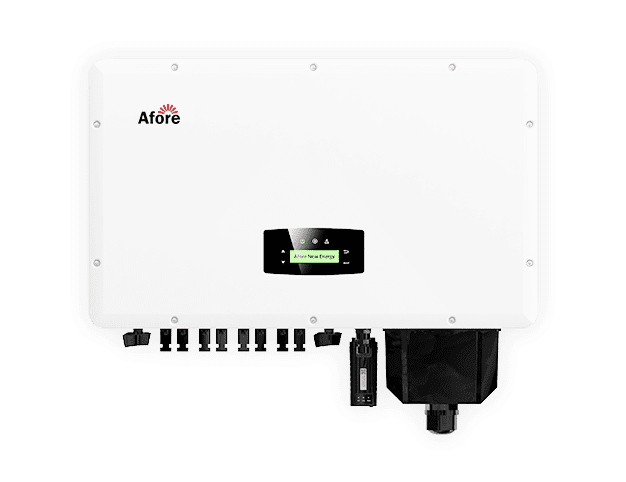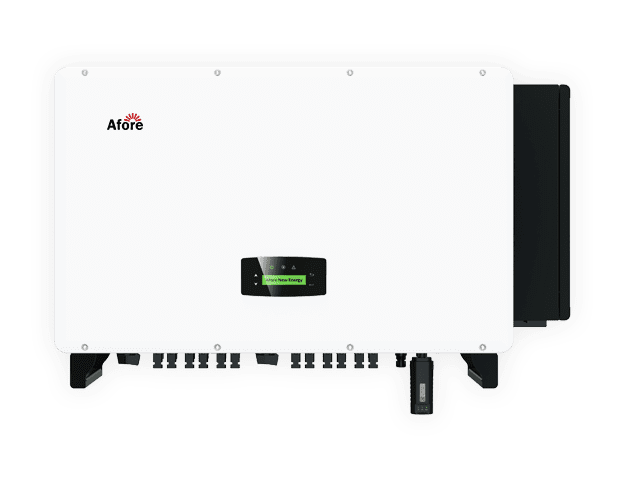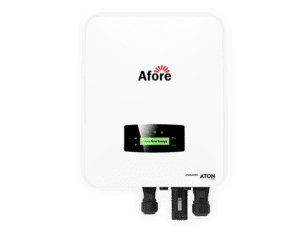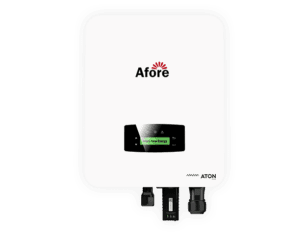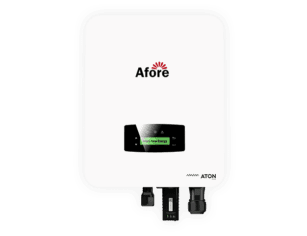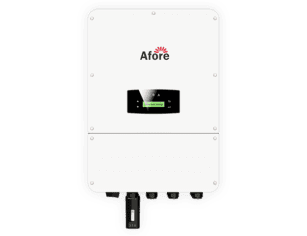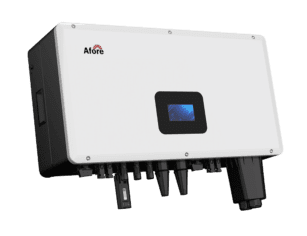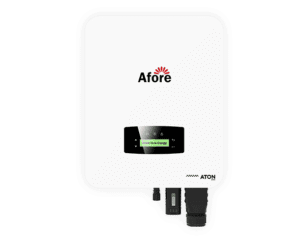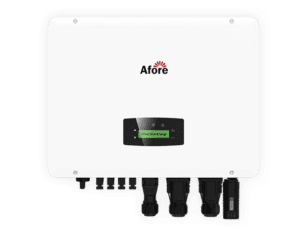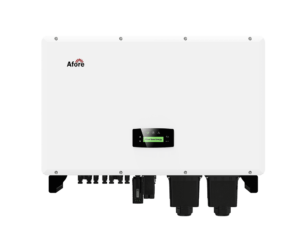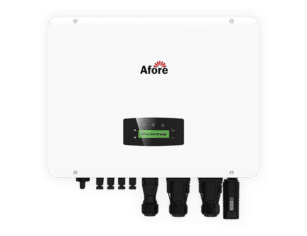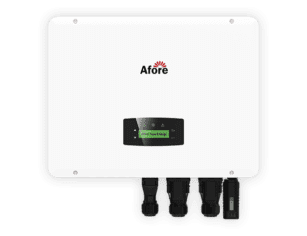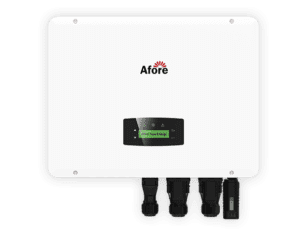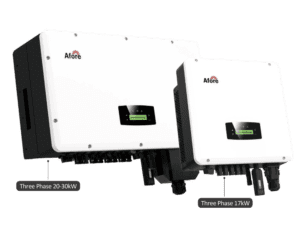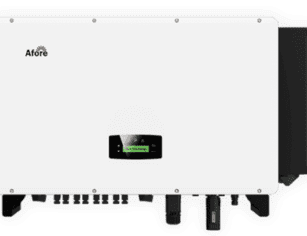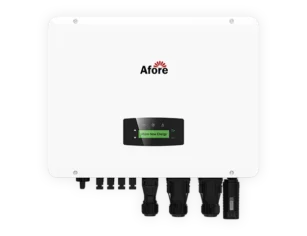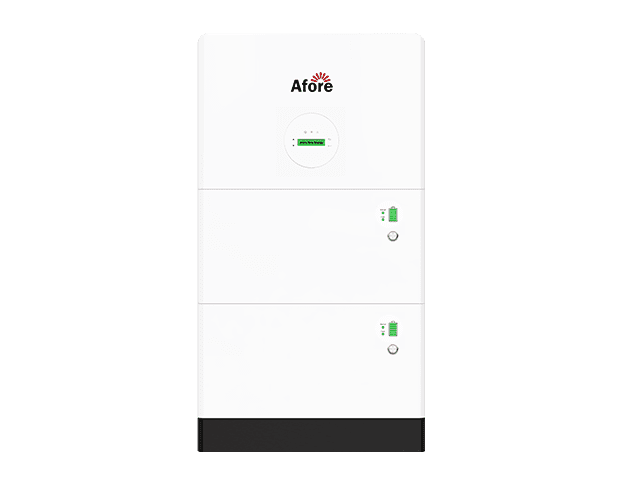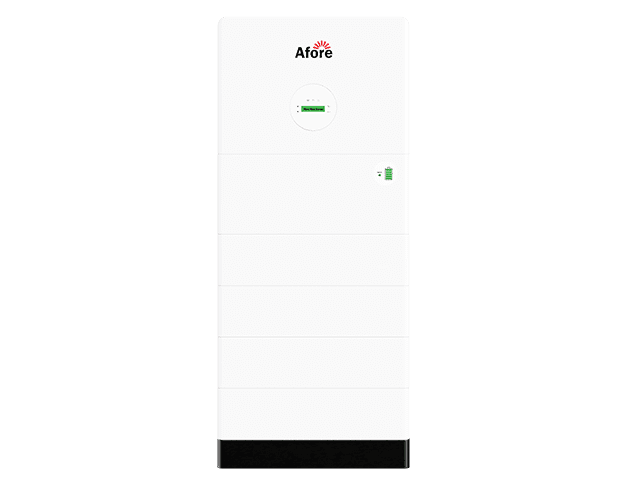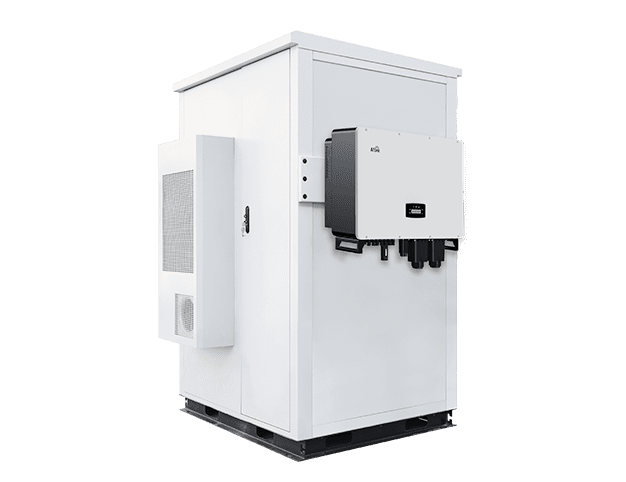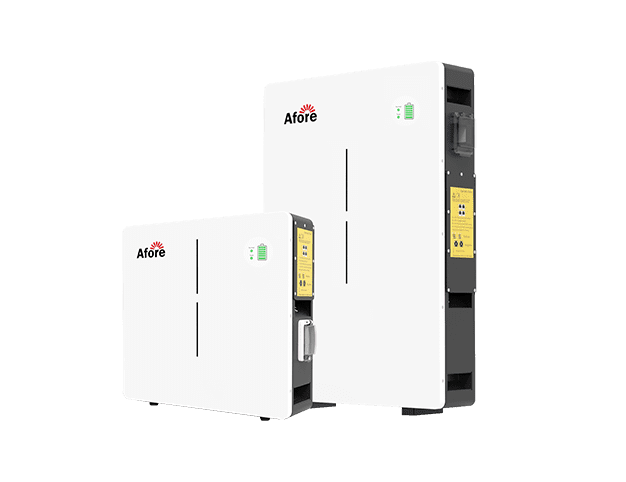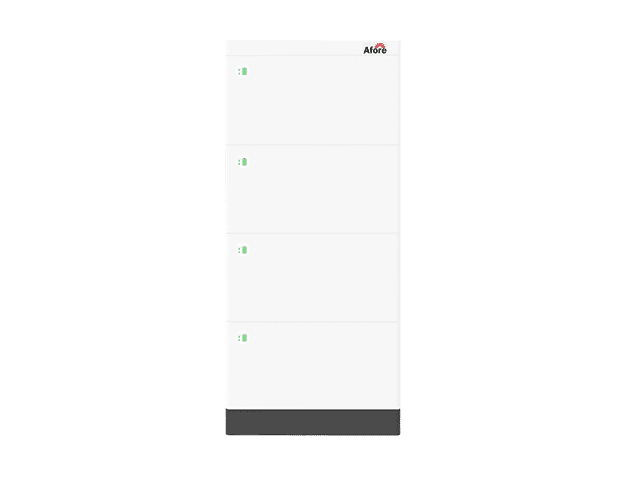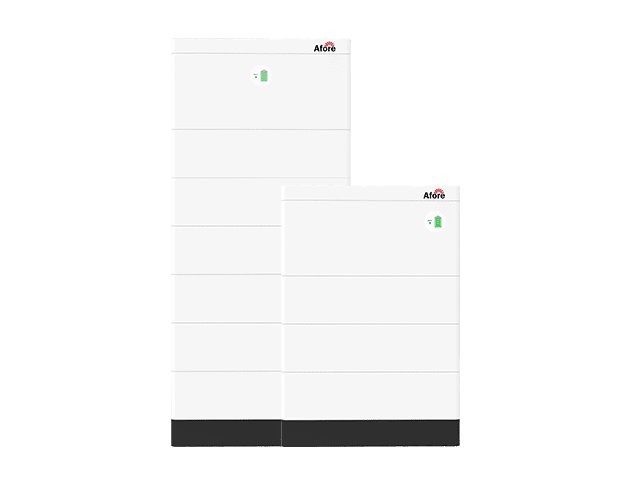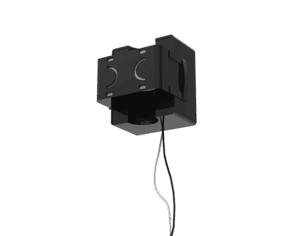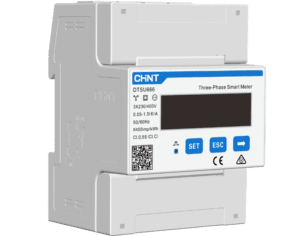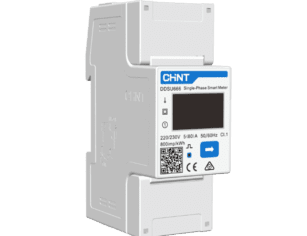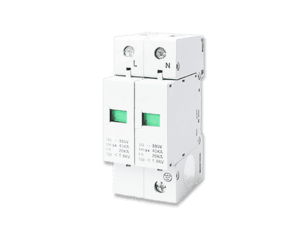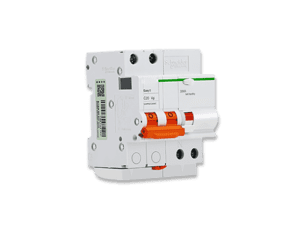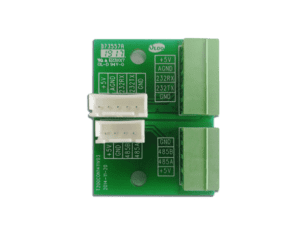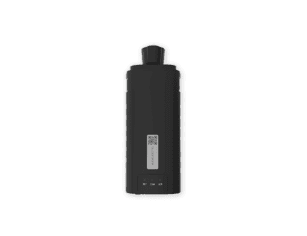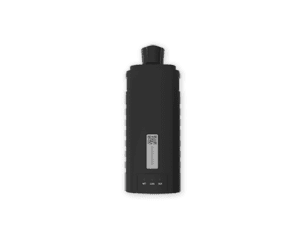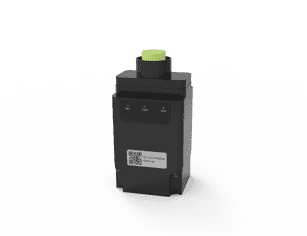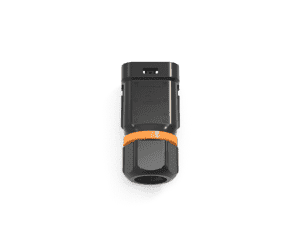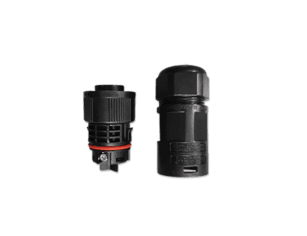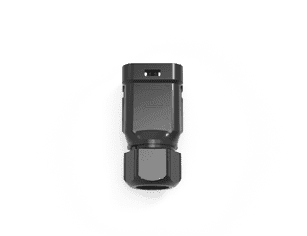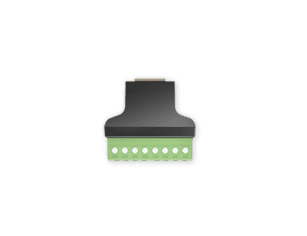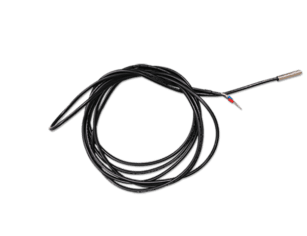Scegliere il miglior inverter solare off grid per l’indipendenza energetica
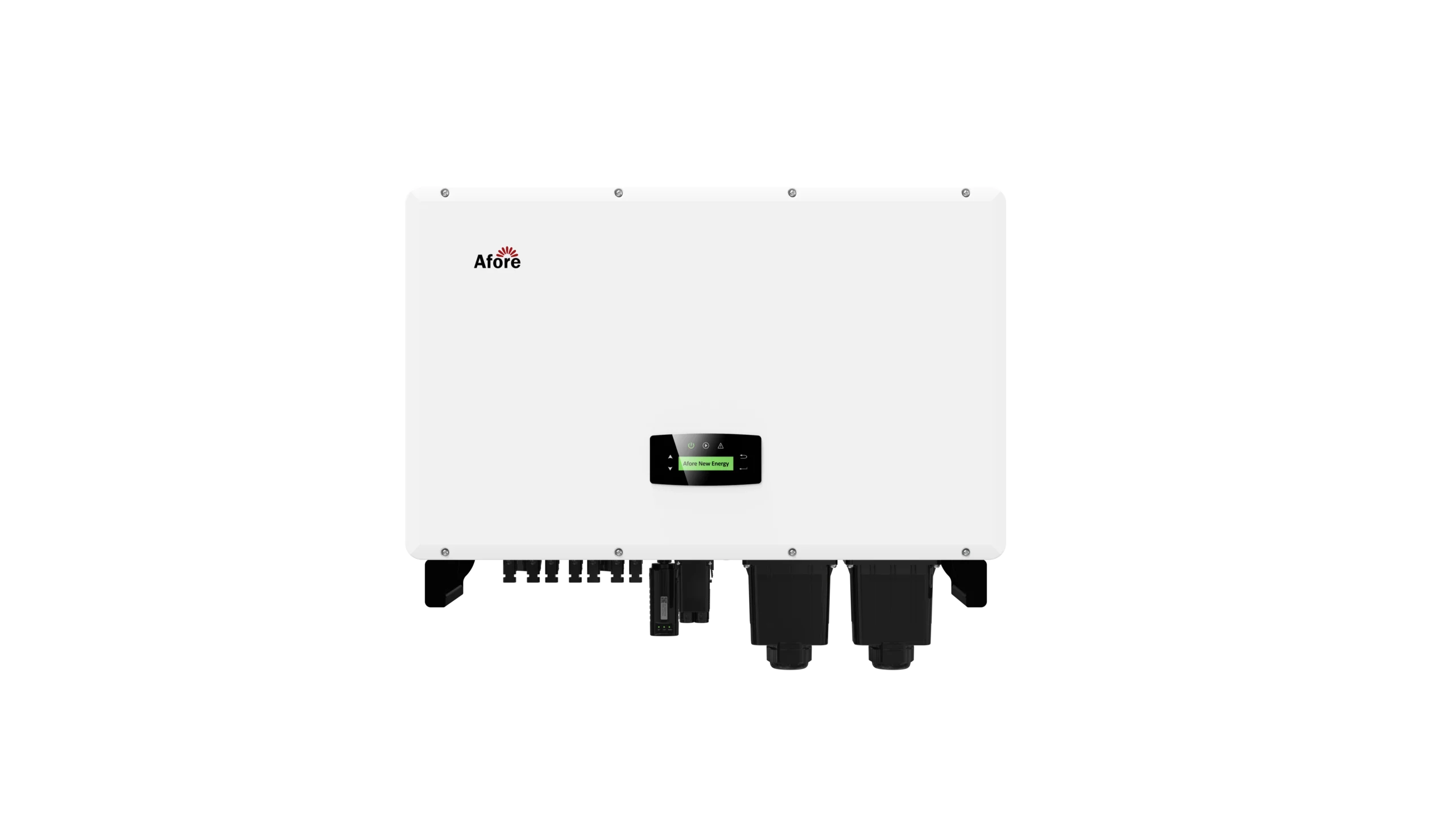
Indice dei contenuti
La funzione principale del sistema off grid inverter solare è quello di convertire la corrente continua in corrente alternata utilizzabile dagli elettrodomestici. Senza una connessione alla rete elettrica, è necessario il miglior inverter solare off grid per garantire un’alimentazione stabile dai pannelli solari alla casa.
The best off grid solar inverters can also charge electric cars and store energy for future use. The great thing about having an off grid solar inverter is that you can be completely self-reliant and don’t have to rely on other less reliable suppliers.
Pertanto, questo blog è stato scritto per introdurre gli inverter solari off grid e alcuni tipi diversi di esso. Inoltre, vi consiglieremo i 3 migliori inverter solari off grid per aiutarvi a sceglierne uno.
Un’introduzione to Fuori rete Inverter solari
Gli inverter solari off grid includono batterie di accumulo e pannelli solari, in modo da poter ottenere energia da entrambe le fonti a casa.
In genere, gli inverter solari off grid ricavano l’energia dai pannelli solari per alimentare la casa al mattino e utilizzare le batterie di notte.
Gli inverter solari off grid controllano il flusso di energia, che controlla le fonti di alimentazione sia in corrente continua che in corrente alternata, che vengono poi utilizzate per sostituire l’elettricità tradizionale nella propria abitazione.
Questo tipo di inverter è ideale per chi vuole utilizzare l’energia solare per alimentare la propria casa. Ognuno di noi ha diversi tipi di elettrodomestici, come TV, elettrodomestici da cucina, lavatrici e le luci che usiamo in casa.
Solo questo richiede molta energia per accenderlo, soprattutto se si vuole che funzioni 24 ore su 24, 7 giorni su 7. Ecco perché gli inverter solari off grid convertono e immagazzinano l’energia che si può utilizzare giorno e notte per garantire il funzionamento di tutti gli elettrodomestici senza aumentare la bolletta dell’elettricità.
I sistemi di alimentazione off-grid o stand-alone spesso richiedono inverter per batterie più potenti e caricabatterie integrati che possono essere impostati per sistemi solari ad accoppiamento CA o CC. I moderni e flessibili inverter solari off grid, noti anche come inverter multimodali, possono essere utilizzati anche per creare sistemi ibridi avanzati connessi alla rete.
I sistemi off-grid piccoli e fai-da-te utilizzano semplici regolatori di carica solare MPPT, noti anche come regolatori solari. Non si tratta di inverter, ma di caricatori di celle solari CC collegati tra il pannello solare e la batteria per regolare il processo di carica della batteria e garantire che la batteria sia caricata correttamente o, soprattutto, non sia sovraccaricata.
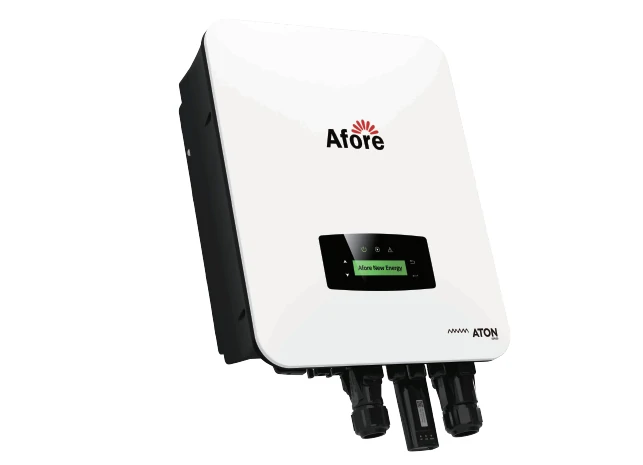
Diversi tipi di inverter solari off-grid
Esistono due tipi di inverter solari off grid: a onda sinusoidale pura e a onda sinusoidale modificata, che di solito si differenziano per tre aspetti: qualità della potenza in uscita, compatibilità e prezzo. Elaborando la qualità della potenza in uscita da questi inverter solari off grid, la qualità della potenza delle onde sinusoidali pure è più pulita. Poiché queste due misure sono chiamate qualità della potenza di uscita CA, è possibile che la qualità della potenza di uscita di un’onda sinusoidale pura sia migliore o superiore alla qualità della potenza di uscita della rete. Pertanto, si può ipotizzare che le onde sinusoidali pure forniscano un’uscita di qualità superiore rispetto alle onde sinusoidali modificate.
Un tipo di inverter solare off grid con una qualità di uscita superiore è più consigliato, anche se è relativamente più costoso. Oltre a questo motivo, quasi tutti gli apparecchi elettrici possono utilizzare questo tipo di inverter. Un altro motivo per cui la correzione di un’onda sinusoidale è più conveniente di un’altra è che può causare danni e problemi ad alcuni apparecchi. Ad esempio, le pompe e i motori dei frigoriferi tendono a bruciarsi più rapidamente e i compressori funzionano a temperature più elevate, con conseguenti danni alle apparecchiature.
Oltre agli elettrodomestici, le onde sinusoidali corrette possono danneggiare anche i dispositivi elettronici sensibili. Questo tipo di inverter TV di solito provoca linee e ronzii sullo schermo, con conseguente degrado della qualità video e audio. Alcuni dispositivi non funzionano completamente con questo inverter. Tuttavia, si può sempre scegliere un’onda sinusoidale modificata rispetto a un’onda sinusoidale pura, perché è più economico se si è sicuri che funzionerà con il dispositivo o l’apparecchio. Oltre a questi tipi di inverter, è possibile installare un centro di alimentazione precablato che comprende un inverter, un caricabatterie, un telecomando e un interruttore automatico, nonché un monitor e un soppressore di batteria.
I vantaggi degli inverter solari off-grid
Il vantaggio fondamentale dell’inverter solare off grid è l’indipendenza energetica. Altri vantaggi di questa tecnologia sono la capacità di fornire una fornitura costante di elettricità durante le interruzioni di corrente anche nelle aree più remote e di ridurre le bollette elettriche, proteggendo al contempo l’ambiente rendendolo più pulito e più verde.
In caso di catastrofe, le comunità collegate alla rete elettrica principale perdono energia. Tali mancanze di corrente o atrocità possono causare danni elettrici.
Se l’attività si basa principalmente sull’uso dell’elettricità, si può verificare anche una perdita di fatturato.
Avere un inverter è un vantaggio, poiché la corrente continua immagazzinata dalle batterie a ciclo profondo dei pannelli solari può fornire una fornitura costante di elettricità alla vostra casa quando viene convertita in corrente alternata.
If you own a off grid inverter solare, you will also experience financial freedom because the grid company has reduced monthly electricity bills, which means you can save money in the long run.
Poiché le società di rete non sono in grado di fornire elettricità ad alcune aree rurali, il dispositivo potrebbe aiutare le famiglie ad avere accesso alla stessa qualità di elettricità di cui godono gli individui nelle aree altamente urbanizzate. Questo è possibile perché la corrente alternata convertita proviene originariamente dalla luce del sole.
Un altro vantaggio del prodotto è che fornisce energia rinnovabile e contribuisce a rendere più verde il pianeta. L’energia solare è disponibile ovunque, quindi il dispositivo funziona ovunque ci si trovi.
Le aziende elettriche sono note per essere la causa dell’inquinamento atmosferico e di altri problemi ambientali, e l’adozione di questa tecnologia contribuirà a salvare il pianeta.
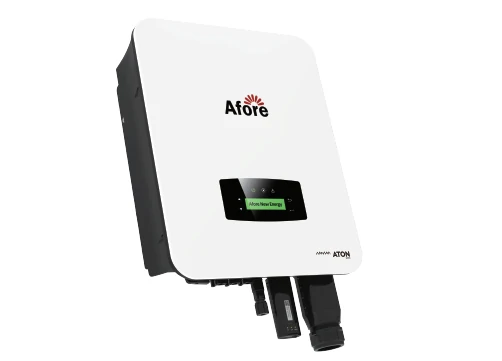
3 I migliori Off Grid Inverter solari
Inverter di accumulo ibrido monofase 8-12 kW
- Max. 240A: Corrente di carica/scarica max. Corrente di carica/scarica 240A
- Sovradimensionamento del PV: 1,5 volte il sovradimensionamento del PV
- Canali MPPT: Fino a 3 canali MPPT
- Funzione UPS: Tempo di commutazione < 10ms
- Parallelo: Max.6 Accatastamento in parallelo
- Ingresso: Generatore di supporto
| Dati tecnici | AF8K-SLP | AF9K-SLP | AF10K-SLP | AF11K-SLP | AF12K-SLP |
| Ingresso FV | |||||
| Potenza massima in ingresso (kW) | 12 | 13.5 | 15 | 16.5 | 18 |
| Tensione PV massima (V) | 550 | ||||
| Gamma MPPT (V) | 80-500 | ||||
| Gamma MPPT completa (V) | 150-500 | 160-500 | 130-500 | 150-500 | 160-500 |
| Tensione normale (V) | 360 | ||||
| Tensione di avvio (V) | 100 | ||||
| Corrente d’ingresso max. Corrente di ingresso (A) | 18.5×3 | ||||
| Corrente massima di breve durata (A) | 26×3 | ||||
| Numero di inseguitori MPP/numero di stringhe FV | 3/1+1+2 | ||||
| Porta della batteria | |||||
| Potenza massima di carica/scarica (kW) | 8 | 9 | 10 | 11 | 12 |
| Corrente massima di carica/scarica (A) Corrente di carica/scarica (A) | 200 | 240 | 240 | 240 | 240 |
| Tensione normale della batteria (V) | 51.2 | ||||
| Intervallo di tensione della batteria (V) | 40-60 | ||||
| Tipo di batteria | Li-ion / Lead-acid etc. | ||||
| Rete AC e alimentazione diesel (opzionale) | |||||
| Corrente continua massima (A) | 37 | 41 | 46 | 50 | 55 |
| Potenza massima continua (kVA) | 8 | 9 | 10 | 11 | 12 |
| Corrente nominale di rete (A) | 37/35 | 41/39 | 46/44 | 50/48 | 55/52 |
| Tensione nominale di rete (V) | 198 to 242 @ 220 / 207 to 253 @ 230 | ||||
| Frequenza nominale della rete (Hz) | 50/60 | ||||
| Fattore di potenza | 0.999(Adjustable from 0.8 overexcited to 0.8 underexcited) | ||||
| THD corrente (%) | <3 | ||||
| Uscita carico CA | |||||
| Corrente continua massima (A) | 37 | 41 | 46 | 50 | 55 |
| Potenza massima continua (kVA) | 8 | 9 | 10 | 11 | 12 |
| Corrente di picco massima (A) (10min) | 55.5/52.5 | 61.5/58.5 | 69/66 | 75/72 | 82.5/78 |
| Potenza di picco massima (KVA) (10min) | 12 | 13.5 | 15 | 16.5 | 18 |
| Tensione nominale CA L-N (V) | 220/230 | ||||
| Frequenza nominale CA (Hz) | 50/60 | ||||
| Tempo di commutazione (ms) | Seamless | ||||
| Tensione THD (%) | <3 | ||||
| Efficienza | |||||
| Efficienza europea (%) | 98.1 | ||||
| Efficienza massima (%) Efficienza (%) | 96.8 | ||||
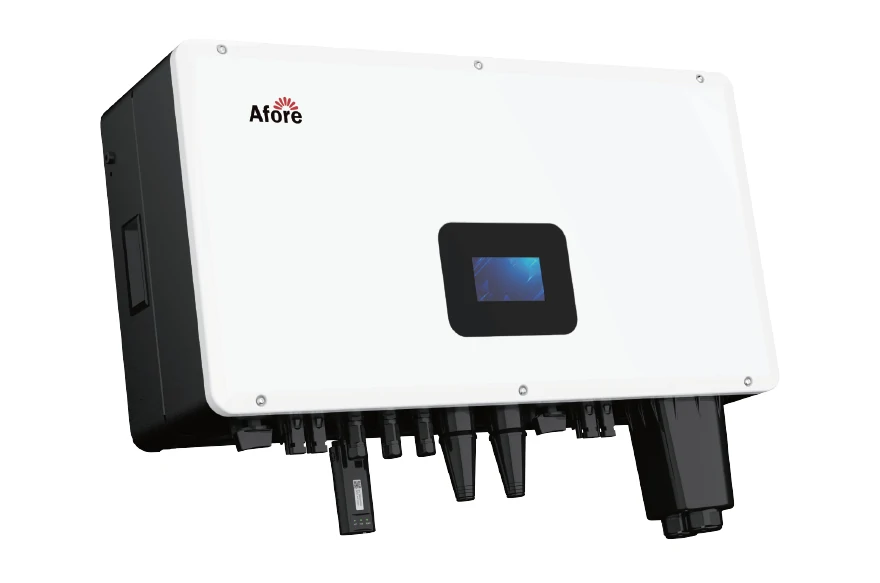
Accumulo ibrido trifase Inverter 3-30 kW
- Batteria al cloruro di sodio metallico: Supporto alla batteria al cloruro di sodio metallico
- Ampia gamma: Gamma di tensione (150-800V)
- 100% Squilibrio: Supporta un carico sbilanciato
- Sovradimensionamento del PV: 1,5 volte il sovradimensionamento del PV
- Max.40Adc: corrente di stringa fino a 40A
- Funzione UPS: Tempo di commutazione< 10ms
- Ingresso: Generatore di supporto
| Dati tecnici | AF3K-TH | AF4K-TH | AF5K-TH | AF6K-TH | AF8K-TH | AF10K-TH |
| Ingresso FV | ||||||
| Potenza d’ingresso CC massima (kW) | 5 | 6 | 7.5 | 9 | 12 | 15 |
| Tensione PV massima (V) | 1000 | |||||
| Tensione nominale di ingresso CC (V) | 620 | |||||
| Gamma di tensione di ingresso DCI (V) | 150-1000 | |||||
| Gamma di tensione MPPT (V) | 150-850 | |||||
| Gamma MPPT completa (V) | 200-850 | 250-850 | 300-850 | 500-850 | ||
| Tensione di avvio (V) | 160 | |||||
| Corrente d’ingresso CC massima (A) | 20×2 | |||||
| Max. Corrente di cortocircuito (A) | 30×2 | |||||
| Numero di inseguitori MPPT/stringhe | 2/2 | |||||
| Porta della batteria | ||||||
| Tensione nominale della batteria (V) | 200 | 250 | 300 | 400 | ||
| Intervallo di tensione della batteria (V) | 150-800 | |||||
| Corrente massima di carica/scarica (A) Corrente di carica/scarica (A) | 30 | 30 | 30 | 30 | 30 | 30 |
| Potenza massima di carica/scarica (kW) Potenza di carica/scarica (kW) | 3 | 4 | 5 | 6 | 8 | 10 |
| Curva di carica | 3 fasi | |||||
| Tipo di batteria compatibile | Batteria agli ioni di litio/acido di piombo/cloruro di sodio metallico | |||||
| Rete AC | ||||||
| Potenza di uscita nominale CA (kW) | 3 | 4 | 5 | 6 | 8 | 10 |
| Potenza massima di ingresso/uscita CA (kVA) | 4.5/3.3 | 6/4.4 | 7.5/5.5 | 9/6.6 | 12/8.8 | 15/11 |
| Corrente di uscita CA massima (A) | 5.3 | 7 | 8.5 | 10.5 | 13.5 | 17 |
| Tensione nominale CA (V) | 230/400 | |||||
| Frequenza nominale CA (Hz) | 50/60 | |||||
| Fattore di potenza | 1(-0.8-0.8) adjustable | |||||
| THD corrente (%) | <3% | |||||
| Uscita di carico CA (back-up) | ||||||
| Potenza di uscita nominale (VA) | 3000 | 4000 | 5000 | 6000 | 8000 | 10000 |
| Tensione di uscita nominale (V) | 230/400 | |||||
| Frequenza di uscita nominale (Hz) | 50/60 | |||||
| Corrente di uscita nominale (A) | 4.4 | 5.8 | 7.3 | 8.7 | 11.6 | 14.5 |
| Potenza di picco in uscita | 3300VA,60s | 4400VA,60s | 5500VA, 60s | 6600VA, 60s | 8800VA, 60s | 11000VA, 60s |
| THDV (con carico lineare) | <3% | |||||
| Tempo di commutazione (ms) | <10 | |||||
| Efficienza | ||||||
| Europa Efficienza | 97.50% | |||||
| Massimo. Efficienza | 98.00% | 98.20% | ||||
| Efficienza di carica/scarica della batteria | 98.00% | |||||
| Dati tecnici | AF12K-TH | AF15K-TH | AF17K-TH | AF20K-TH | AF25K-TH | AF30K-TH |
| Ingresso FV | ||||||
| Potenza d’ingresso CC massima (kW) | 18 | 22.5 | 25.5 | 30 | 37.5 | 45 |
| Max.PV Voltag(V) | 1000 | |||||
| Tensione nominale di ingresso CC (V) | 620 | |||||
| Gamma di tensione d’ingresso CC (V) | 150-1000 | |||||
| Gamma di tensione MPPT (V) | 150-850 | |||||
| Gamma MPPT completa (V) | 500-850 | |||||
| Tensione di avvio (V) | 160 | |||||
| Corrente d’ingresso CC massima (A) | 20×2 | 20+32 | 32×2 | 32×2 | 40×2 | 40×2 |
| Corrente massima di cortocircuito (A) | 30×2 | 30+48 | 48×2 | 48×2 | 60×2 | 60×2 |
| No. di inseguitori MPPT / stringhe | 2/2 | 2/3 | 2/4 | 2/4 | 2/4 | 2/4 |
| Porta della batteria | ||||||
| Tensione nominale della batteria (V) | 450 | 500 | 400 | 500 | 500 | 550 |
| Intervallo di tensione della batteria (V) | 150-800 | |||||
| Corrente massima di carica/scarica (A) | 30 | 50 | 50 | 50 | 60 | 60 |
| Potenza massima di carica/scarica (kW) | 12 | 15 | 17 | 20 | 25 | 30 |
| Curva di carica | 3 fasi | |||||
| Tipo di batteria compatibile | Batteria agli ioni di litio/al piombo/al cloruro di sodio metallico | |||||
| Rete AC | ||||||
| Potenza di uscita nominale CA (kW) | 12 | 15 | 17 | 20 | 25 | 30 |
| Potenza massima di ingresso/uscita CA (kVA) | 18/13.2 | 22.5/16.5 | 25.5/18.7 | 30/22 | 37.5/27.5 | 45/33 |
| Corrente di uscita CA massima (A) | 21.5 | 27 | 30 | 32 | 40 | 48 |
| Tensione nominale CA (V) | 230/400 | |||||
| Frequenza nominale CA (Hz) | 50/60 | |||||
| Fattore di potenza | 1 (-0,8-0,8) regolabile | |||||
| THD corrente (%) | <3% | |||||
| Uscita di carico CA (back-up) | ||||||
| Potenza di uscita nominale (VA) | 12000 | 15000 | 17000 | 20000 | 25000 | 30000 |
| Tensione di uscita nominale (V) | 230/400 | |||||
| Frequenza di uscita nominale (Hz) | 50/60 | |||||
| Corrente di uscita nominale (A) | 17.4 | 21.8 | 24.7 | 29 | 36.3 | 43.5 |
| Potenza di picco in uscita | 13200VA,60s | 16500VA,60s | 18700VA, 60s | 22000VA,60s | 27500VA,60s | 33000VA,60s |
| THDV (con carico lineare) | <3% | |||||
| Tempo di commutazione (ms) | <10 | |||||
| Efficienza | ||||||
| Europa Efficienza | 97.50% | 97.80% | 98.00% | 98.10% | ||
| Efficienza massima | 98.30% | 98.50% | ||||
| Efficienza di carica/scarica della batteria | 98.00% | |||||
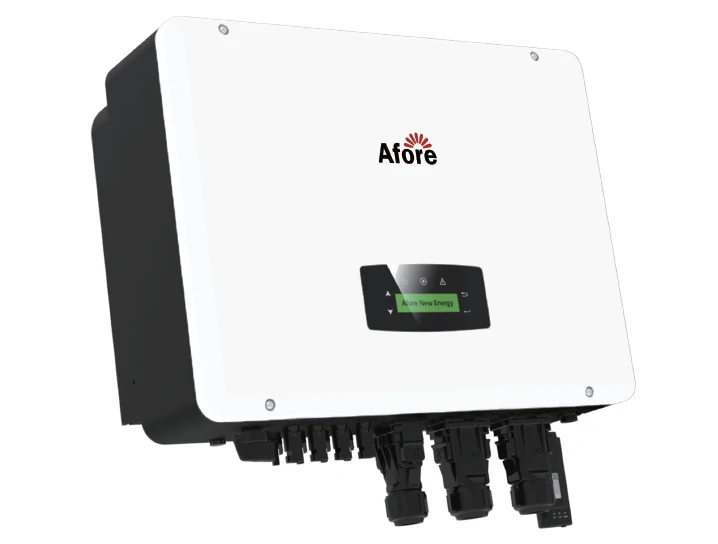
Inverter di stringa fotovoltaico trifase 40-60 kW Serie a bassa tensione
- SMART: monitoraggio intelligente delle stringhe, scansione intelligente della curva l-V
- PROTEZIONE: Protezione dell’illuminazione di tipo II Dc e AC
- MAX.38Adc: corrente di stringa fino a 38A
- PV OVERSIZE: >1,5 Tempo ingresso PV sovradimensionato
- FATTORE DI POTENZA: Compensazione della potenza attiva e reattiva
- ANTIFLOW: Funzione Anti-Feed-in
| Dati tecnici | BNT040KTA | BNT050KTA | BNT060KTA |
| Dati di ingresso PV | |||
| Potenza massima (W) Potenza CC (W) | 60000 | 75000 | 90000 |
| Tensione massima CC (V) | 750 | ||
| Gamma di tensione MPPT (V) | 200-750 | ||
| MPPT Intervallo di tensione a piena potenza (V) | 300-750 | ||
| Tensione nominale d’ingresso (V) | 400 | ||
| Tensione di avvio (V) | 200 | ||
| Corrente di ingresso massima (A) | 38×6 | ||
| Max. Corrente di cortocircuito (A) | 48×6 | ||
| N. di inseguitori MPP / N. di stringhe FV | 6/12 | ||
| Tipo di connettore di ingresso | MC4 | ||
| Dati di uscita CA | |||
| Potenza di uscita massima (VA) Potenza di uscita (VA) | 44000 | 55000 | 66000 |
| Potenza di uscita nominale (W) | 40000 | 50000 | 60000 |
| Massima corrente di uscita (A) Corrente di uscita (A) | 120 | 143 | 158 |
| Tensione di uscita nominale( V) | 3P+N+PE/3P+PE 133/230 | ||
| Gamma di tensione di rete | 180Vac-260Vac (secondo lo standard locale) | ||
| Frequenza di uscita nominale (Hz) | 50/60 | ||
| Gamma di frequenza della griglia | 45-55Hz/54-66Hz (secondo lo standard locale) | ||
| Fattore di potenza in uscita | 1 predefinito (regolabile da 0,8 in testa a 0,8 in coda) | ||
| Corrente di uscita THD | <3% | ||
| Efficienza | |||
| Massimo. Efficienza | 99.00% | ||
| Euro Efficienza | 93.00% | 98.40% | |
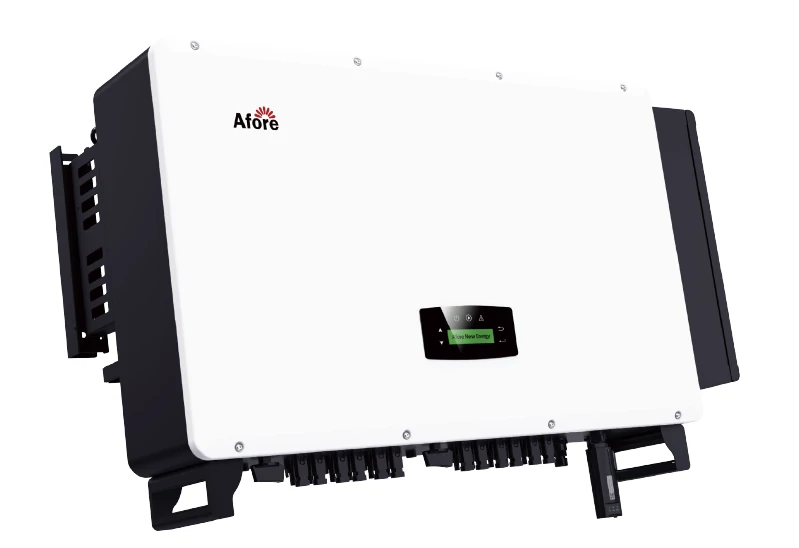
Che cosa fanno i migliori off grid Gli inverter solari hanno in comune?
I migliori inverter off grid sono soluzioni all-in-one. Combinano tre parti essenziali in una configurazione precablata:
- Un regolatore di carica solare MPPT
- Un inverter a onda sinusoidale pura
- Un caricatore da CA a CC (generatore/caricabatteria di riserva)
Inoltre, tutti supportano le più recenti batterie al litio e dispongono di un’app dedicata per il monitoraggio via cloud e la configurazione online.ration.
Come scegliere il migliore off Inverter solare di rete?
Tensione di uscita dell’inverter
Questo valore si basa sui requisiti del carico e di solito corrisponde alla tensione/frequenza di alimentazione standard del vostro paese/regione. La tensione di uscita dell’inverter solare off grid deve corrispondere alla tensione nominale del carico. 240 V in Europa e Africa e 120 V negli Stati Uniti. Gli inverter devono essere mantenuti a 50Hz in Africa e in Europa e a 60Hz negli Stati Uniti.
Gamma di potenza dell’inverter
Per le apparecchiature solari, la gamma di potenza è importante. È necessario assicurarsi che l’apparecchiatura scelta sia in grado di soddisfare le proprie esigenze di potenza. Anche se i pannelli sono sufficienti a generare la giusta quantità di energia, non ha molto senso se l’inverter non è in grado di gestire il carico. Pertanto, anche la gamma di potenza dell’inverter è importante. Di seguito sono riportate le varie gamme di potenza degli inverter e le loro applicazioni tipiche:
- Da 1 a 2 kW: piccola cabina con luce, TV, frigorifero e telefono.
- Da 2 a 4 kW: cabine più grandi e alcune piccole case ad alta efficienza energetica.
- Da 4 a 8 kW: la maggior parte delle abitazioni non collegate alla rete.
- Da 8 a 16 kW: abitazioni off-grid di grandi dimensioni, fattorie o ranch e piccole imprese.
Anche se le dimensioni degli inverter sono più grandi e più piccole di quelle sopra elencate, queste sono le opzioni più popolari, con 4 kW e 8 kW come opzioni preferite.
Ingresso della tensione continua dell’inverter
Una volta selezionata la capacità di potenza e la marca/produttore dell’inverter solare, nel foglio delle specifiche dell’inverter sarà presente un intervallo di tensione d’ingresso CC corrispondente e sarà necessario scegliere la tensione della batteria che vi corrisponda.
L’inverter con regolatore di carica solare incorporato sarà di tipo MPPT o PWM.
L’MPPT è tecnicamente migliore perché è in grado di convertire l’alta tensione del pannello solare in una tensione più bassa, in modo da caricare la batteria con una bassa perdita (alta efficienza), ma costa più del tipo PWM. D’altra parte, se riusciamo a selezionare correttamente il tipo di regolatore di carica solare PWM in base alle specifiche del pannello solare, allora possiamo confermare che può funzionare bene come il tipo di regolatore di carica MPPT.
Considerare onde sinusoidali pure invece di onde sinusoidali modificate
Alcuni produttori hanno parlato di inverter a onda sinusoidale pura. Non è necessario sapere esattamente come funzionano. È sufficiente sapere che la potenza in uscita di un inverter a onda sinusoidale pura è più “pulita” di quella di un inverter a onda sinusoidale modificata.
Un inverter a onda sinusoidale pura fornisce una potenza di qualità superiore, simile (o migliore) a quella della rete elettrica. Gli inverter a onda sinusoidale modificata sono più economici, ma producono energia di qualità inferiore.
Per questo motivo, gli inverter a onda sinusoidale migliorata possono causare problemi ad alcune apparecchiature. Motori, pompe e compressori si surriscaldano e si usurano più rapidamente. In alcune apparecchiature sensibili (ad esempio, i computer), possono essere danneggiati o non funzionare affatto. Inoltre, questi inverter spesso producono un rumore di fondo nello stereo e degradano la qualità video e audio di alcuni televisori.
Per questo motivo non consigliamo l’uso di inverter a onda sinusoidale modificata nella maggior parte delle applicazioni; la maggior parte dei nostri clienti off-grid utilizza inverter a onda sinusoidale pura per evitare questi potenziali problemi.
Avete bisogno di un modo rapido per capire la differenza? Consultate il valore della distorsione armonica totale (THD) dell’inverter. Il THD è un indicatore della qualità dell’alimentazione in uscita, riportato sulla scheda tecnica di ogni buon inverter. Regola empirica Per evitare problemi, scegliere un inverter a onda sinusoidale pura con un THD di 5% o inferiore.
Guarda le specifiche tecniche
- Efficienza: Misura la quantità di energia che la batteria dell’inverter solare fornisce all’abitazione quando funziona in condizioni perfette. Una buona efficienza di picco si aggira tra il 94 e il 96%.
- Intervallo di temperatura: Gli inverter solari sono estremamente caldi. Se si prevede di installare un sistema solare in un garage o in un luogo che potrebbe essere esposto a temperature estreme, prestare particolare attenzione all’intervallo di temperatura.
- Garanzia: Gli inverter solari hanno una garanzia di 1 anno, in genere di 3-5 anni, e alcuni produttori offrono un’opzione di estensione della garanzia a 10 anni. Afore offre una garanzia di fabbrica standard valida 5 anni dalla data di installazione e non più di 5 anni e mezzo dalla data di consegna da parte di Afore.
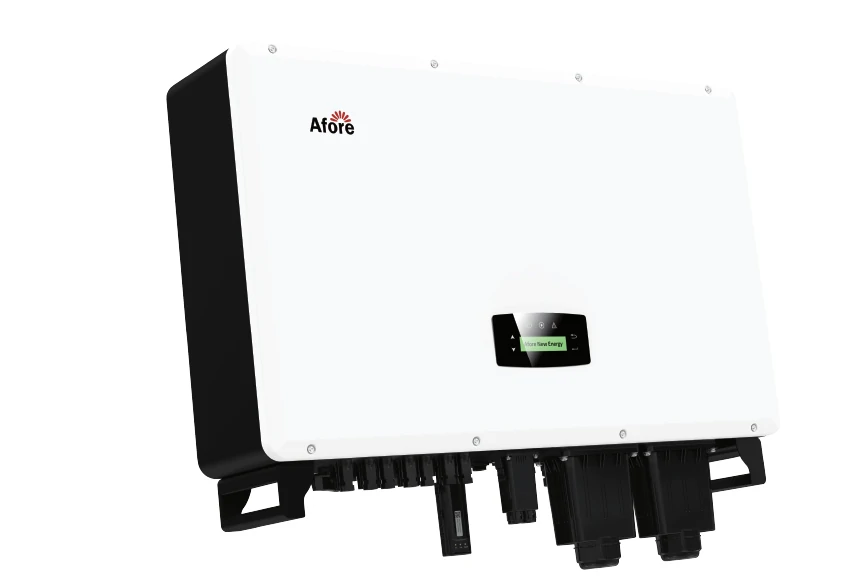
Conclusione
Un inverter solare off grid è un componente assolutamente essenziale per chi cerca l’indipendenza energetica. Questo è particolarmente vero per le aree remote o per chi vuole ridurre la propria dipendenza dai fornitori di energia elettrica tradizionali. I vantaggi dei migliori inverter solari off grid sono molteplici. Tra questi, la capacità di convertire e immagazzinare l’energia solare, di fornire energia di riserva in caso di interruzione di corrente e di ridurre le bollette elettriche nel tempo. Sono disponibili in vari tipi, come gli inverter a onda sinusoidale pura e gli inverter a onda sinusoidale modificata; i modelli a onda sinusoidale pura sono più consigliati per l’alta qualità della produzione e la compatibilità con una gamma più ampia di apparecchi. I migliori inverter solari off-grid integrano solitamente un regolatore di carica MPPT, un inverter a onda sinusoidale pura e un sistema di ricarica di backup per garantire efficienza e affidabilità. Considerando la capacità di potenza, la gamma di tensione e la qualità di uscita dell’inverter, è possibile scegliere la soluzione migliore per soddisfare le proprie esigenze e contribuire a un futuro energetico più verde e sostenibile.




